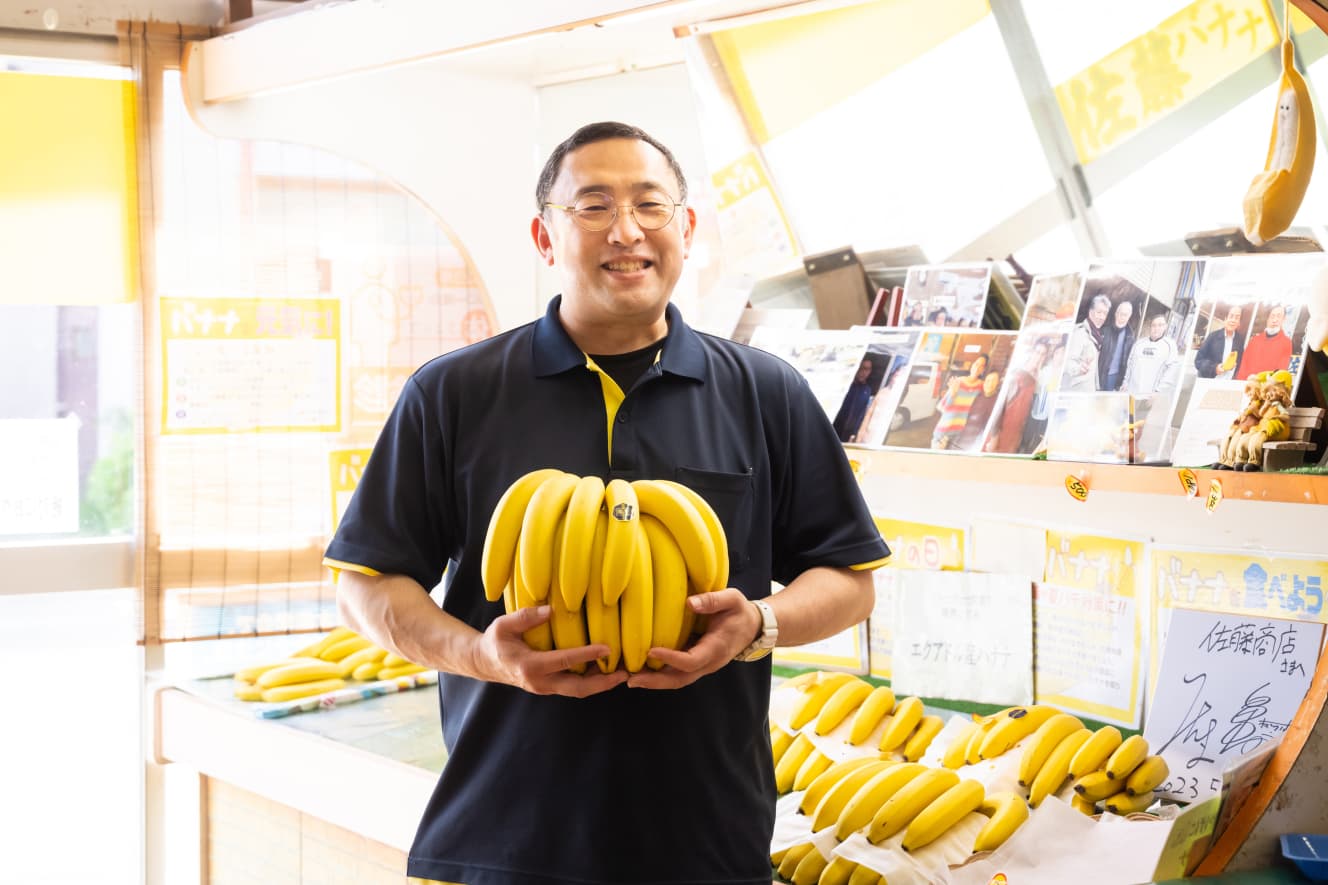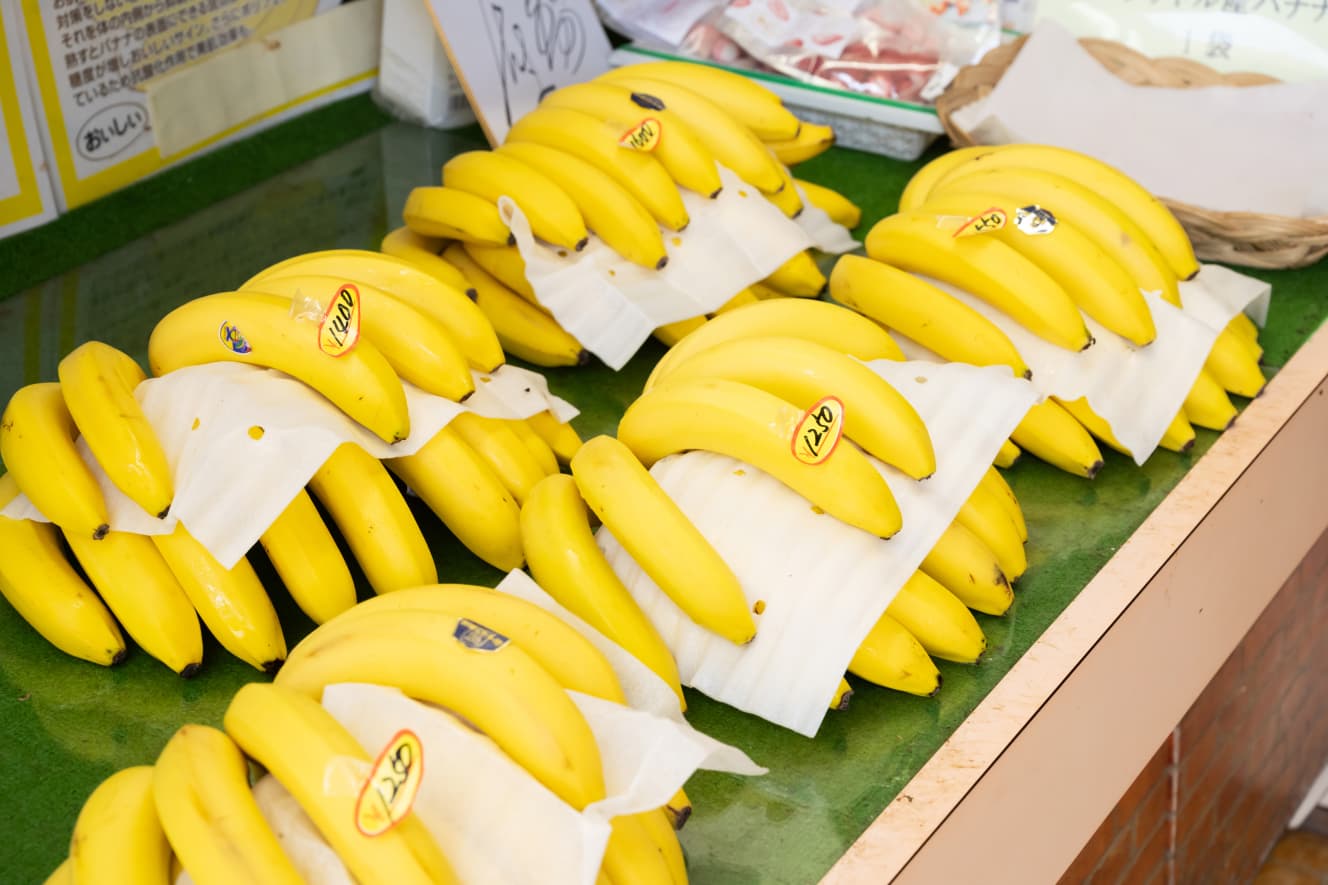Only “bananas” on the store shelves…Why does Mr. Sato, the third generation of the 92-year-old Sato Shoten, deal only in bananas?
The “holy land” of banana lovers…bananas for 92 years!
Sato Shoten, a banana wholesaler in Tateyama City, Chiba Prefecture, is now considered a “sacred place” among banana lovers for its delicious bananas. I was told to come around 3:00 p.m., and when I visited the store, there was already quite a lot of empty space in the storefront. I was told to come around 3:00 p.m. When I visited the store, there was already quite a lot of empty space in the store. Including those sold to supermarkets as wholesalers, they sell 3,000 bananas a day!

Mr. Sato handles three kinds of bananas: Taiwanese, Philippine, and Ecuadorian.
Why in the world do they only sell bananas?
My grandfather Katsuo, who came to Yokohama from Miyagi Prefecture to work, ate bananas and was amazed at how delicious they were, so he opened a banana specialty store.
That’s how it all started,” says Takashi Sato, the third-generation successor. The company was founded in 1931. Bananas are now the most commonly eaten fruit in Japan, but back then they were a luxury item that was rarely seen.
Impressed by the banana’s delicious taste, Katsuo learned about import routes and ripening methods from banana import companies and stores that handled bananas, and opened his own business in Tateyama, Chiba.
Bananas come to Japan in a green state. We ripen them until they turn yellow before selling them.
If the temperature is raised too quickly, the bananas turn yellow faster, but they are still hard inside and have a core. I guess they couldn’t tolerate selling bananas in such a state. He decided to build a storage facility where he could buy bananas while they were still green and ripen them himself.
Katsuo went to Ecuador in search of delicious bananas more than 80 years ago.

Aged for one week in six storage units
At the back of the store, there are six storage units where they are cured. When I was allowed to enter, it was cool and refreshing. The humidity and temperature are controlled by air conditioning.
If the temperature is raised too high, the color will change within half a day. We check the temperature several times a day and adjust it in 0.5°C increments.
About 6,000 bananas are stored in one storage unit. When these bananas are allowed to ripen slowly over a week or so, they turn into delicious, aromatic bananas.
In Katsuo’s time, there must have been no air conditioning. I wonder how they ripened them.
He said, “We put ice in the bananas to make it like an ice house, and that seems to have been the method used to adjust the temperature.
What a time-consuming process! He was that particular about “delicious bananas.



Because the bananas are ripened slowly, the taste remains the same even after 4 to 5 days.
The skin is tight and the bananas are round. They look delicious just by looking at them. I was told that there were bananas priced at 2,000 yen per bunch, but when I looked at the price tag with trepidation, I saw that there were also Ecuadorian bananas priced at 300 yen for four bananas.
The price varies slightly depending on the type, but if they are the same kind, the difference in price is the weight. Smaller bunches are cheaper, but the taste is the same.
The next day, the best ones are put on the shelves in the store. Is there really that much of a difference?
On my way home, I secretly ate one of the Ecuadorian bananas I bought. It was a little green ……. The next day, I ate it, and it was indeed sweeter! I had imagined it to be sticky sweet, but it was rather refreshing and fruity sweet. Delicious ……. The professionals were not wrong.
After 4-5 days, the skin starts to thin, but the inside has not turned brown. Is this the result of aging over time?
The price is a little higher than what is sold in supermarkets, but we have no choice but to put in the time and effort to make sure our customers are satisfied. It is very encouraging when people say, ‘That was delicious.
Recently, an increasing number of stores are offering banana juice and banana parfaits using Sato Shoten bananas.
Sometimes people ask me, ‘Can’t we have parfaits here? We leave that kind of thing to the professionals in that field and compete with just one banana.
Some farmers have started growing bananas in Futtsu, near Tateyama, and bananas from Futtsu are now sold in the store, although irregularly.
I hope to support my hometown with bananas.


Interview and text by: Izumi Nakagawa PHOTO: Ayumi Kagami